No, this isn’t a Christmas cookie. The flavors are straight out of the Germanic regions, like Alsace-Lorraine, Germany and Austria, where Jews lived for many, many centuries, and where many were a vital part of spice business. This bread bursts with ginger from gingersnap cookies and fresh ginger. It’s distinctly sweet, mildly hot, richly spiced and it’s all supported with the warm undertones of apples. Enrobed in the enriched challah dough, this really is a treat. It makes a wonderfully fragrant, complex loaf that is great for any autumn or winter celebration.
When you spread the filling over the three sections of dough, make sure to leave a clean edge of at least 1½ inches to prevent overflow and allow for good bread-to-bread stickage. Don’t be afraid to give it a good pinch to seal it. Then roll up into a tube. Next, I slash the tubes about halfway through to the bottom — not more — so you can see all that yummy filling — but not enough for it to fall out and burn. Then they are braided.
If you prefer, you can make this challah into a shtreimel shape, the coiled round loaf that is traditional for Ashkenazi Rosh Hashanah and fall holidays. I make a very long single tube shape, increasingly and gradually thicker at one end than the other (by about 1 to 1½ inches). I do not usually slice or slash it, but it’s possible as long as you don’t get carried away and cut it too deep. To coil: Starting with the thinnest part of the tube, twist and wind it like a snake coiled up onto itself and tuck the end down into the center to make a spiral that seemingly has no end. You can also start the coil from the inside out, starting with the thickest part for the first small tight coil.
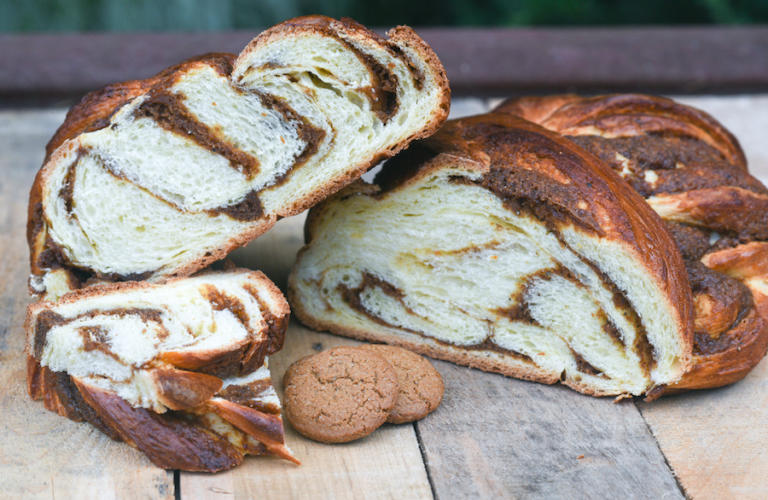
Gingersnap and Apple Challah Recipe
This gingersnap and apple challah recipe combines the warm spice of gingersnap cookies with the sweetness of apples, creating a festive and flavorful twist on traditional challah.
- Total Time: 10 hours 40 minutes
- Yield: 1 loaf
Ingredients
For the dough:
- 1 (¼ oz/7 g) packet instant yeast (about 2 ¼ tsp)
- ¼ cup (51 g) plus 2 tsp (9 g) granulated sugar, divided
- ⅔ cup (158 g) warm water, between 85°F and 95°F
- 3 ¾ cups (532 g) bread flour, plus more for dusting
- 3 large eggs, divided
- 3 large egg yolks
- ¼ cup (54 g) canola or any mild-flavored oil
- 2 tsp (8 g) kosher salt
- 2 tsp water
For the filling:
- 18–20 gingersnap cookies
- ⅓ cup (113 g) apricot jam or preserves
- 1 ¼ tsp (3 g) roasted ground cinnamon
- ¾ tsp (2 g) roasted ground cardamom
- 3-inch (3 oz) piece fresh ginger, peeled and grated finely (about 3 Tbsp)
- ⅛ tsp ground allspice
- 6–10 scrapes fresh nutmeg
- 6 Tbsp apple butter
Instructions
- Prepare the dough: In the bowl of a stand mixer fitted with a dough hook, combine the yeast, 2 tsp of the sugar and the ⅔ cup warm water. Mix to combine. Let stand for 2-3 minutes, until the yeast starts to foam.
- Add 1 ¾ cups of flour to the yeast mixture and mix to combine.
- In a mixing bowl, whisk the remaining sugar, 2 of the whole eggs, the egg yolks, oil, and salt together until combined. Add this to the yeast and flour mixture and mix at low speed until thoroughly incorporated, about 1 minute. Add the remaining 1¾ cups flour, and once fully incorporated, and knead at medium speed for 6-7 minutes. The dough should be smooth, soft, and slightly sticky.
- Transfer the dough to a large bowl and cover with plastic wrap and a damp kitchen towel and refrigerate for 8 hours or overnight.
- When the dough is chilled, remove it from the refrigerator. Line a 12- by 18-inch rimmed baking sheet with parchment paper or a nonstick silicone pad and set aside. Preheat the oven to 350°F.
- Make an egg wash by whisking the remaining egg and the water in small bowl and set aside.
- To make the filling, place the gingersnaps in the bowl of a food processor and process for 15-20 seconds, until finely ground. (You will have about 1 cup of crumbs.) Add the apricot jam, cinnamon, cardamom, ginger, allspice and nutmeg and process for 10-20 seconds, until it has the consistency of a paste. Set aside.
- Lightly flour a work surface and a rolling pin. Turn the dough out onto the work surface and divide it into 3 equal pieces (about 330 g each). Cover 2 of the pieces in plastic wrap and set aside. On the work surface, roll the remaining piece of dough into a rough 10-inch square. It should be about ⅛ inch in thickness. Spray a silicone spatula with nonstick vegetable oil spray and use it to spread about ⅓ cup of the filling across the dough, and then spread 2 Tbsp of apple butter on top, leaving a ½-inch border uncovered on the side furthest from you. Use a pastry brush to brush a small amount of the egg wash over the uncovered edge.
- Use a pastry scraper or a spatula to help you lift up the filled edge of the dough and roll it up into a tube, jelly roll-style, as tightly as you can, toward the exposed edge. Pinch the seam closed with your fingertips. Gently roll the tube back and forth over the work surface until it spreads lengthwise to about 12-inches long.
- Cover the first tube with plastic wrap and set aside while you repeat with the remaining dough and filling, working with one piece of dough at a time.
- Slash the tubes: Line up the 3 rolled, filled tubes on the prepared baking sheet. With a very sharp, long knife, make a lengthwise slash through each tube, cutting halfway down the depth of the tube, but making sure not to cut all the way through to the bottom.
- Roughly measure the center point of the tubes (about 6 inches in from the ends). Working outward from that point, braid the tubes together, crossing one of the outer tubes gently over the middle one. Then cross the other outer tube up and over the new middle one. Repeat, working your way down to the end. Half of the tube should be braided. Then turn the parchment paper around and braid the other side, from the center point to the end, so that the entire loaf is braided.
- Spray a piece of plastic wrap with nonstick vegetable oil spray and cover the bread with it, sprayed-side down. Allow the bread to rise for 40 minutes.
- Uncover and brush liberally and completely with the egg wash.
- Bake for 50-60 minutes, until the crust is a warm brown and crusty, and an instant-read thermometer inserted into the bottom of the loaf reads about 200°F. If you tap it gently on the bottom, it should sound hollow.
- Cool in the pan for 10 minutes. Then transfer to a rack to cool completely before serving.
- Prep Time: 40 minutes + 9 hours chill/rise time
- Cook Time: 1 hour
- Category: Side Dish
- Method: Baking
- Cuisine: Holiday
The Nosher celebrates the traditions and recipes that have brought Jews together for centuries. Donate today to keep The Nosher's stories and recipes accessible to all.
2 comments
Leave a Comment
Ashkenazi
Pronounced: AHSH-ken-AH-zee, Origin: Hebrew, Jews of Central and Eastern European origin.
challah
Pronounced: KHAH-luh, Origin: Hebrew, ceremonial bread eaten on Shabbat and Jewish holidays.
Rosh Hashanah
Pronounced: roshe hah-SHAH-nah, also roshe ha-shah-NAH, Origin: Hebrew, the Jewish new year.
shtreimel
Pronounced: sht-RYE-mull, Origin: Yiddish, a large fur hat worn by Hasidic men.
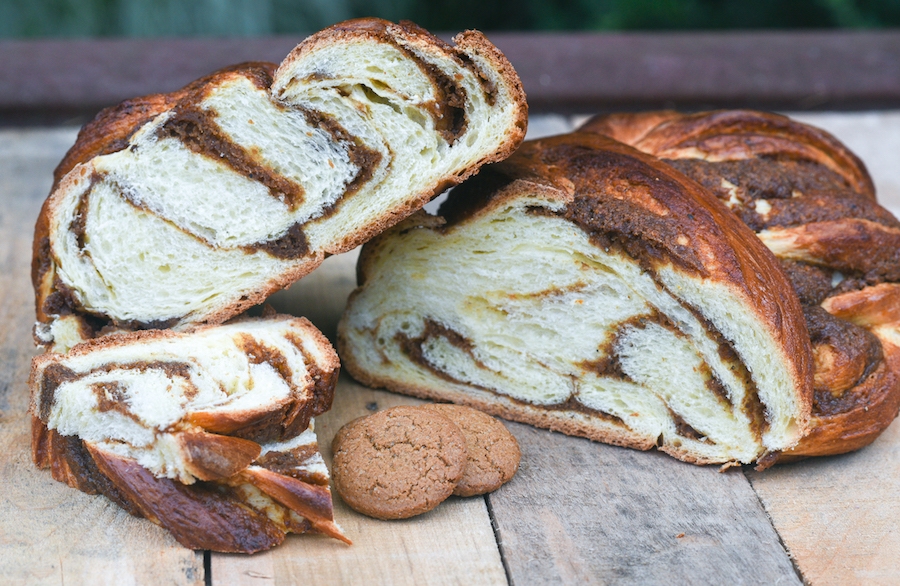
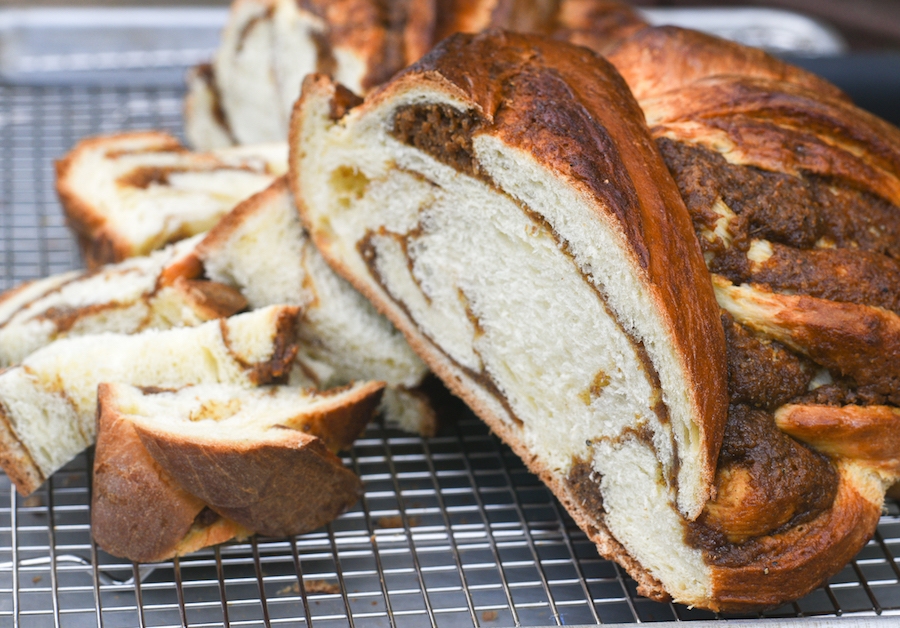
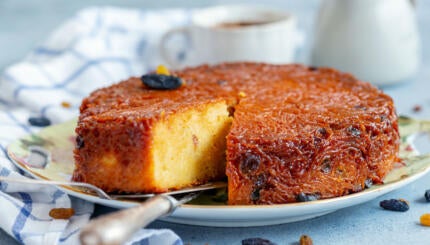
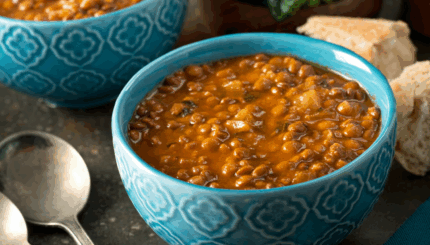
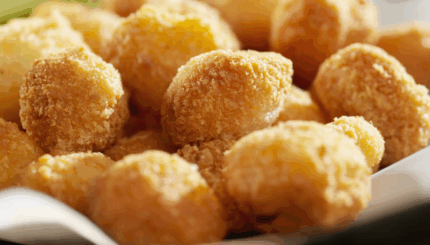
You seem to have forgotten the apple in this Gingersnap and APPLE Challah
The apple butter (see ingredients) is the apple component. Enjoy!